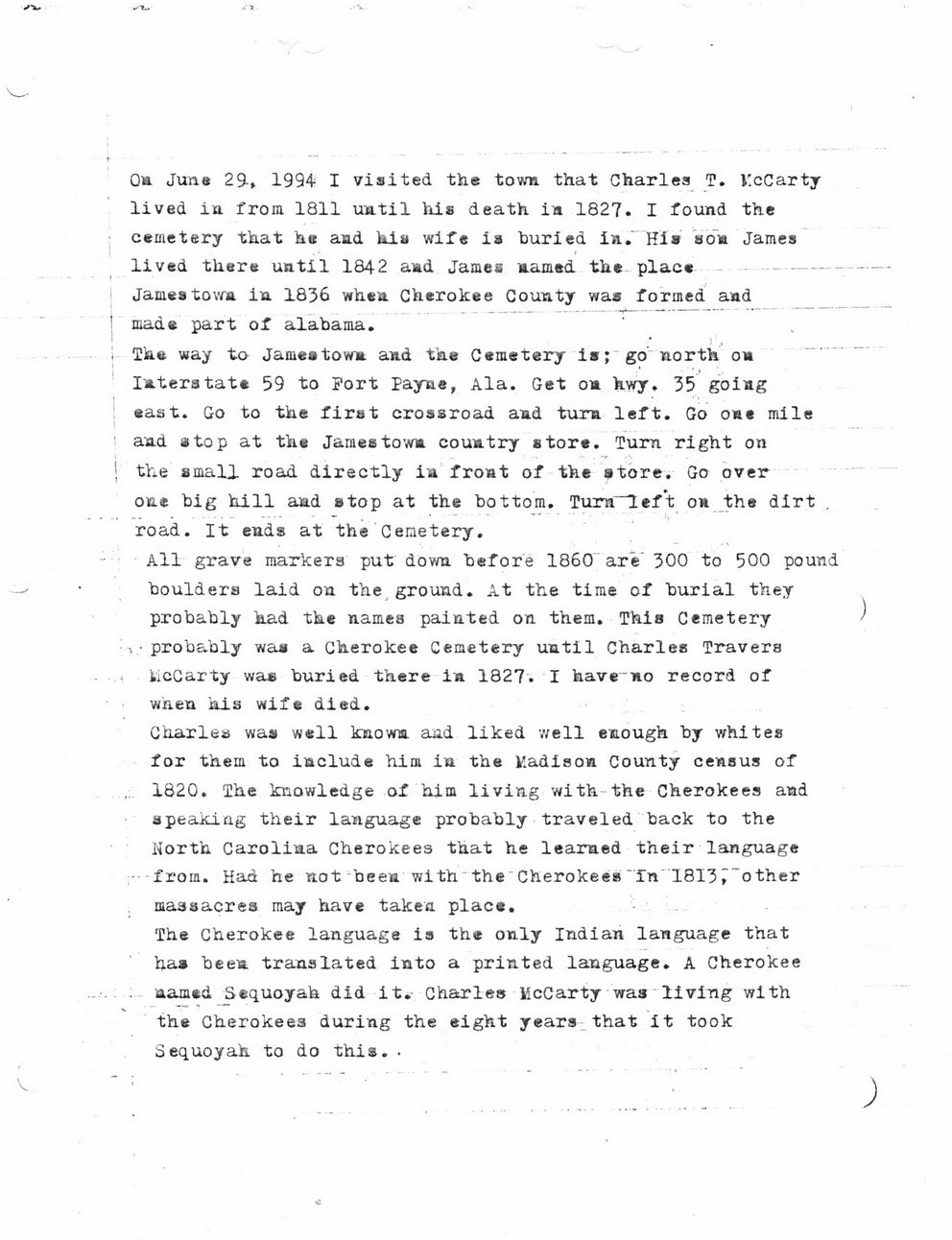This text was obtained via automated optical character recognition.
It has not been edited and may therefore contain several errors.
On. June 29-? 1994- I visited the town that Charles T. McCarty lived in from. 1811 until Ms death in 1827. I found the cemetery that he aad kisi wife is buried In.' His ao"n James lived there until 1842 and James named the place - -------------------- James town in 1836 when Cherokee County was formed and mad? part of alabama. < .? Tk?t way to Jamestown and the Cemetery is; go north on In-terstat* 59 to Port Eayne, Ala. Get on hwy. 35 going east. Go to the first crossroad and turn left. Go one mile and atop at the Jamestown country store. Turn right on . -r \ the small road directly in front of the store. Go over one big hill aad stop at the bottom. Tum~2eft on the dirt road. It ends at the Cemetery. - All grave markers put down before 1860 are' 300 to 500 pound boulders laid on thejground. At the time of burial they probably had the names painted on them. This Cemetery ^probably wa* a Cherokee Cemetery until Charles Travers iicCarty was buried there in 1827. I have no record of when kis wife died. Charlea was w?ll known suid liked well enough by whites for them to include him in the Madison County census of 1820. The knowledge of him living with-the Cherokees and speaking their language probably traveled back to the North Carolina Cherokees that he learned their language - from. Had he not been with'the'Cherokees "Tn 1813 pother massacres may have taken plac?. The Cherokee language is the only Indian language that ha? been translated Into a printed language. A Cherokee . named Sequoyah did it. Charles McCarty was'living with the Cherokees during the eight years_that it took Sequoyah to do this..

McCarty Geneology-1635-1994-09